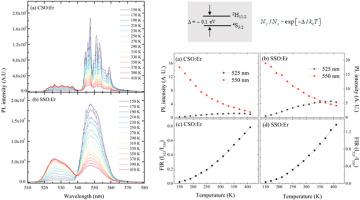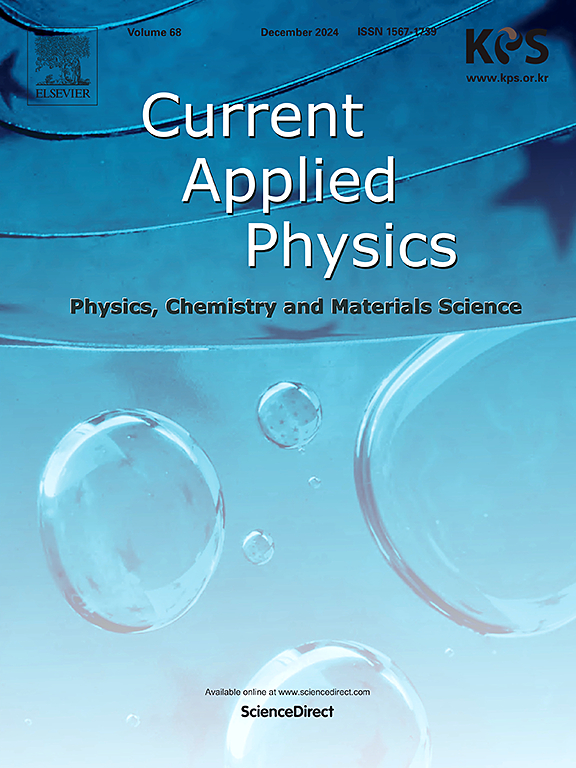Correlation between optical thermometry and Judd–Ofelt parameters in Er3+-doped perovskite oxides
IF 3.1
4区 物理与天体物理
Q3 MATERIALS SCIENCE, MULTIDISCIPLINARY
引用次数: 0
Abstract
We investigate the optical thermometric performance of Er3+-doped perovskite oxides with thermally coupled levels (TCLs). We obtain their optical thermometric parameters, such as their fluorescence intensity ratio and temperature sensitivity, from upconversion luminescence spectra under 980 nm excitation over a wide temperature range. Subsequently, we systematically compare these experimentally determined parameters with theoretical predictions for a TCL system, in addition to parameters derived from Judd–Ofelt (J–O) analysis, which is a well-established theoretical framework that describes the radiative transitions and intensities of rare-earth (RE) ions. A close correspondence between the experimental and theoretical results is achieved when the temperature-dependent variation of the J–O parameters and the TCL gap is considered. Our findings provide valuable insights into the roles of host-lattice effects, local crystal field variations, and defect-related phenomena in governing the thermal response of RE ion-doped phosphors for optical thermometry applications.

Er3+掺杂钙钛矿氧化物中光学测温与Judd-Ofelt参数的相关性
研究了具有热偶联能级(tcl)的Er3+掺杂钙钛矿氧化物的光学测温性能。我们从宽温度范围内980 nm激发下的上转换发光光谱中获得了它们的光学测温参数,如荧光强度比和温度灵敏度。随后,我们系统地比较了这些实验确定的参数与TCL系统的理论预测,以及从Judd-Ofelt (J-O)分析中得出的参数。Judd-Ofelt (J-O)分析是一个成熟的理论框架,描述了稀土离子的辐射跃迁和强度。当考虑温度相关的J-O参数变化和TCL间隙时,实验结果与理论结果非常吻合。我们的研究结果为宿主晶格效应、局部晶体场变化和缺陷相关现象在控制光学测温应用中稀土掺杂荧光粉的热响应中的作用提供了有价值的见解。
本文章由计算机程序翻译,如有差异,请以英文原文为准。
求助全文
约1分钟内获得全文
求助全文
来源期刊

Current Applied Physics
物理-材料科学:综合
CiteScore
4.80
自引率
0.00%
发文量
213
审稿时长
33 days
期刊介绍:
Current Applied Physics (Curr. Appl. Phys.) is a monthly published international journal covering all the fields of applied science investigating the physics of the advanced materials for future applications.
Other areas covered: Experimental and theoretical aspects of advanced materials and devices dealing with synthesis or structural chemistry, physical and electronic properties, photonics, engineering applications, and uniquely pertinent measurement or analytical techniques.
Current Applied Physics, published since 2001, covers physics, chemistry and materials science, including bio-materials, with their engineering aspects. It is a truly interdisciplinary journal opening a forum for scientists of all related fields, a unique point of the journal discriminating it from other worldwide and/or Pacific Rim applied physics journals.
Regular research papers, letters and review articles with contents meeting the scope of the journal will be considered for publication after peer review.
The Journal is owned by the Korean Physical Society.
 求助内容:
求助内容: 应助结果提醒方式:
应助结果提醒方式:


